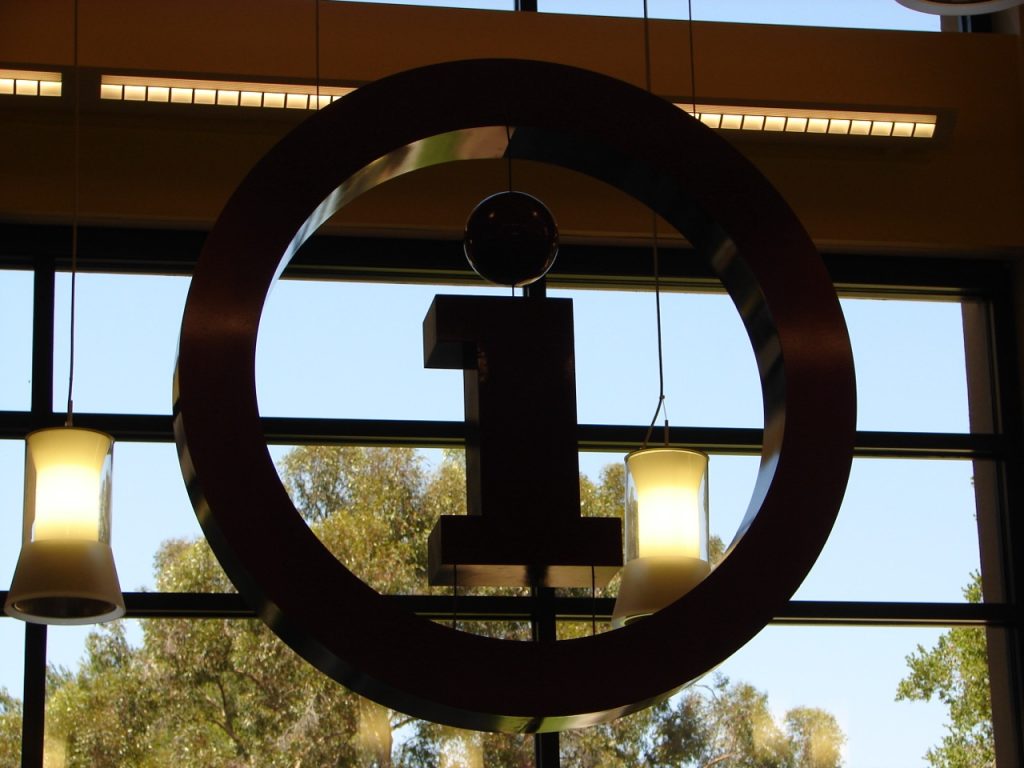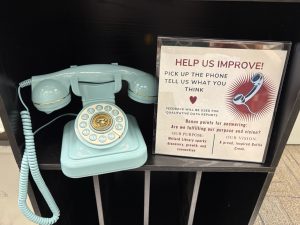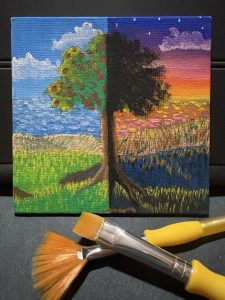A theme I found myself exploring as I read about ideas related to Michael Stephens’s Hyperlinked Library concept, is connecting with people—the current library users as well as potential library users in the community. The library profession is naturally concerned with staying relevant. Hence, its emphasis on introducing the latest technologies. Yes, it’s important to integrate emergent technologies (see Buckland) and make these tools available to all people along with the instruction needed to use them. But, how can a library be relevant to people who might not feel any kind of connection to the institution which so earnestly aspires to make positive impacts on their lives? (see Casey & Savastinuk)
Connection Goes Both Ways

Information Desk at the Belmont Library https://www.flickr.com/photos/smcl/520329374/in/photostream/
I work at a public library’s information desk—the Reference Desk of the olden days. I estimate that customer service is 99% of my work. While, sometimes the work can feel transactional, I’m no stranger to a guest expressing real joy and appreciation for something I was able to help them with—this is when I find my work most meaningful. In fact, based on some over-long patron interactions (that compete with the needs of other guests) there are definitely people who crave social interaction. So, while reading about the changing nature of library service, I’ve been thinking a lot about the human connection between library staff and library guests.
What’s a librarian to do?
Several questions spring to my mind when considering cultivating real human connection at the library. For instance, how do I strike a balance between genuinely connecting with a patron while being professional and maintaining a level of familiarity that I feel good about? How do libraries, as an institution, connect with current users to increase their satisfaction? How can we connect with potential users in the community? Finally, how should libraries leverage today’s and tomorrow’s technology to increase engagement with their library?
Modern connection
In his 2005 article, Roush equates social connection with “computing”. While, now, “computing” sounds quaint and the social technologies he mentioned continue to evolve, the idea still holds true. Keeping up with family, friends, and personal interests on Facebook and Instagram is commonplace. Yet, according to the Pew Research Center many in younger generations sideline even those platforms in favor of sites like YouTube and TikTok. My own (grown) kids seem to speak in meme, rolling their eyes about how out of touch I am.

wert38 reddit post https://www.reddit.com/r/TheSimpsons/comments/22fern/am_i_so_out_of_touch/?utm_source=share&utm_medium=web3x&utm_name=web3xcss&utm_term=1&utm_content=share_button
In fact, a place where libraries shine is in recognizing that we are a multi-experiential society, coming from different socioeconomic, generational, and cultural backgrounds. It’s important to remember that there will be no one-size fits all approach in this path to connection (See Casey & Savastinuk). Whether we meet people IRL or online, we must also make sure staff are representative of the people that the library aims to serve. However that looks, the key, according to Stephens (2016) in his book, The Heart of Librarianship, is visibility—breaking through that stereotype of the librarian hiding in the stacks.
Innovation Outside the Stacks

Maker Space feedback “phone”
I’m seeing some innovative ideas in practice that may move us toward our goal of connecting through visibility and multifaceted communication. Gathering feedback from library users about programs and services can be done in creative ways that are more interesting than standard surveys, like this replica rotary telephone that enables patrons to record voice memos about experiences using the maker space. This same library hosts a “Tiny Art Show” which draws numerous amateur artists to the library to display their work on mini-canvases. There’s an evening where the artists can work together on their contributions as well as a mixer at the end of the patron voting.

Tiny art show entry.
The Ann Arbor District Library has developed a very popular way of reaching out to its entire service area by creating the “Summer Game”, encouraging the people to participate in library activities through partnerships with other local organizations and community members.
My Take
I’ve come to realize that rather than libraries maintaining the role of simply delivering answers and information, they should work collaboratively with patrons to meet information needs and create a sense of belonging.
References
Buckland, M. K. (1997). Redesigning Library Services: A Manifesto. http://sunsite.berkeley.edu/Literature/Library/Redesiging/html.html
Casey, M.E. & Savastinuk, L. C., (2007). Library 2.0: A guide to participatory library service. Information Today.
Roush, W. (2005, August 1). Social machines: Computing means connecting. MIT Technology Review. https://www.technologyreview.com/2005/08/01/39676/social-machines/
Stephens, M. T. (2016). The Heart of Librarianship: Attentive, Positive, and Purposeful Change. ALA Editions.

Recent Comments